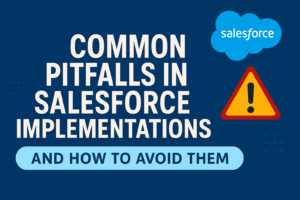BLOG
3 Top Tips to Shift your Thinking to a Mobile-First Strategy
Mobile phones have changed the marketing landscape, with Australians spending an average 5.5 hours a day on their mobile (reviews.org). Consumers have become more impatient than ever before and expectations have never been higher when it comes to brands offering valuable information at the touch of a smartphone.
At Social Garden, 84% of the leads we generated last year across the property industry came through from mobile devices. What does this mean when it comes to our creative and advertising strategies? It means we need to put our mobile-first hats on.
What do we mean by mobile-first?
Firstly, let’s cut through the jargon. When we refer to mobile-first, really we’re making sure that everything we create is optimised to deliver fantastic (thumb-friendly) UX on a mobile device first, and a desktop device second. Simple!
3 top tips for mobile-first marketing
Whether it’s social ads, Google search copy, building emails or landing pages, Social Garden utilises the following 3 principles to ensure a mobile optimised user experience.
- Increase speed wherever possible
- Mobile optimise your creative output
- Allow mobile behaviours to influence your channel strategy
#1 Increase speed wherever possible
One of the key behavioural shifts driven by increased mobile phone usage is consumer expectations around speed. So much so that 70% of customers say site speed impacts their purchasing decisions (Search Engine Journal).
At Social Garden we’re obsessed with performance, so every second we can shave off page speed means increased conversions, increased efficiency and ultimately better results for our clients!
 Not sure about your website or landing page speed? There are some great tools out there to help you identify your load speed as well as some tips and ideas to improve it. Page Speed is one of the favourites at the Garden.
Not sure about your website or landing page speed? There are some great tools out there to help you identify your load speed as well as some tips and ideas to improve it. Page Speed is one of the favourites at the Garden.#2 Optimise your creative output for mobile
The key difference between desktop and mobile? Format. In a nutshell, when designing mobile-first you need to shift your thinking from landscape to portrait. Follow some of our tried and tested methods below.
Photography – ensure to capture portrait formats as well as the traditional landscape, or take wide-angle high quality images that can be cropped in either format.
Video – with increased mobile phone usage we have seen a HUGE increase in the importance of video as part of your marketing strategy, which you can read about here. You want to ensure that not only is video a key component of your strategy, but that you’re thinking about mobile executions of video such as user generated content (UGC) and Stories advertising.
Advertising imagery – mobile responsiveness means that you can show landscape images on a mobile device when advertising, but should you? If you want to catch your audience’s attention, we recommend you try to take up as much real estate as possible on the screen. This means square and portrait format ads are the way forward.
Copy – short and sweet is what you’re aiming for when it comes to our mobile audiences. Break down content into easy to digest sentences, and don’t be afraid to use icons to add visual cues to reinforce the information.
Test and test again – with so much of your audience experiencing your brand through a mobile phone screen, make sure that each touchpoint is stress tested on a mobile device. Is the copy legible? Are the buttons big enough? Can the audience easily navigate to the content they need? How easy is it to populate the form? After all, 79% of people say they’re more likely to revisit and/or share a mobile site if it is easy to use (Google Think Tank).
#3 Mobile behaviours should influence your channel strategy
Mobile phones have changed user behaviour big time. When it comes to adapting your channel strategy to suit, there are some key considerations to take into account. Your audience is most likely using multiple social media channels, watching content via YouTube and streaming services, and doing the majority (55%) of their internet search via a mobile device. How can you adapt your channel strategy to meet these consumers where they’re spending their time?
- Embrace performance branding – the latest buzzword, performance branding takes the strategic content approach of traditional brand marketing (building trust, sharing values and forging emotional connection) but underpins this with a performance marketing methodology. With consumers spending more of their time glued to a screen, you can ensure that your brand is front of mind across a much broader selection of digital channels. Not only is this WAY more cost effective than traditional media, you can also benefit from the data and insights digital provides to continually optimise and learn what types of content work best for your audience.
- Jump on board new trends with social – especially when it comes to your organic social content! If you jump on board the latest feature Instagram releases you’ll be given a cheeky boost in the algorithm and are way more likely to be found in the ‘Explore’ section of the feed. We saw it with Stories, we saw it with Reels, and we’ll see it again.
- Be a pioneer – with new platforms and placements for advertising emerging regularly, allow time and resources to explore new digital channels (hello Tik Tok) and see if you find a fit for your brand. So long as you monitor and learn from these channel experiments, you might just untap a wealth of value or a whole new audience for your brand.
Mobile-first marketing in a nutshell
The key takeaway here? Mobile is here to stay. Align your marketing strategy to your consumers’ shifted behaviours and you’ll not only improve the customer experience but also significantly increase your marketing ROI.
If you’d like any additional tips and tricks, reach out to the team at Social Garden—we’re here to help!














